
Festival Buzz: Part Three of Three
The Big Docs: Non-Fiction Features and Shorts
2015 Wisconsin Film Festival, April 9-16; Film Guide at wifilmfest.org»
Film Guide available in Wednesday’s Capital Times (Wisconsin State Journal insert and free distribution sites)
Box Office Opens Saturday, March 14 at 12:00pm: Union South Box Office (Noon-8:00pm); Memorial Union Campus Arts Box Office (Noon-5:30pm); and 2015.wifilmfest.org
Wednesday: The Big Indies: Narrative Features and Experimental Films
Thursday: The Big Auteurs: International Cinema and Restorations
Below Taylor Hanley provides a survey of critical responses to many intriguing documentaries playing at the 2015 Wisconsin Film Festival.
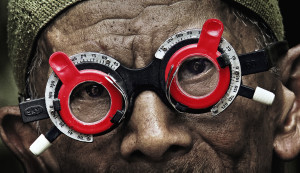 The Look of Silence | Joshua Oppenheimer | Denmark, Indonesia | 2014 | 98 min»
The Look of Silence | Joshua Oppenheimer | Denmark, Indonesia | 2014 | 98 min»
The Look of Silence is Oppenheimer’s companion piece to The Act of Killing. The film follows Adi, an optometrist whose brother was murdered during the 1965 Indonesian genocide, as he confronts his brother’s killers while testing their eyesight.
The criticism of The Act of Killing, as romanticizing and humoring the murders of the genocide, seems less likely for The Look of Silence since the film focuses on confronting the killers rather than reenacting the killings. Peter Bradshaw of The Guardian observes, “This new movie is far more conventional, and conventionally confrontational than the previous one, and the people involved seem at last to have grasped how horrendous they are appearing” Guy Lodge writes in Variety that the film, “reveals Oppenheimer to be a documentary stylist of evolving grace and sophistication” And as of now The Look of Silence has 100% rating on Rotten Tomatoes.
For The Look of Silence trailer, synopsis and information about the background and filmmakers, check out the film’s official website.
 Kurt Cobain: Montage of Heck | Brett Morgen | USA | 2015 | 132 min»
Kurt Cobain: Montage of Heck | Brett Morgen | USA | 2015 | 132 min»
Brett Morgan’s documentary follows the grunge singer and guitar player from his beginning playing in Aberdeen, Washington, to his success and eventual downfall with band Nirvana. This full story is told through home-video footage, archival music and interviews of family and friends. Brett Morgan created this film with crates and crates of Cobain’s possessions given to him by Courtney Love, “Morgen was given unrestricted access to the archive: 200 hours of audio, 4,000 pages of diaries, home videos, complete editorial freedom and final edit.” (Katherine Bromwich, The Guardian).
David Fear of Rolling Stone says the film is, “an eight-years-in-the-making collective labor of love that offers a private peek into the artist’s mind, from the first creative stirrings to the spiral downward.” Despite most reviewers saying the film shocked the audiences at Sundance, Variety‘s Dennis Harvey does address a criticism, “if Montage of Heck has a flaw, it’s that Cobain’s regrettably brief life has been so persistently combed through already that the pic can offer little truly new insight.”
However, the Sundance Institute insists “Fans and those of the Nirvana generation will learn things about Cobain they never knew while those who have recently discovered the man and his music will know what makes him the lasting icon that he is.”
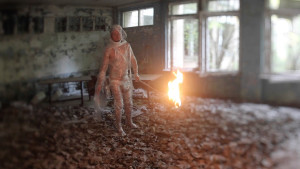 The Russian Woodpecker | Chad Garcia | USA | 2015 | 80 min»
The Russian Woodpecker | Chad Garcia | USA | 2015 | 80 min»
Director Chad Garcia helps Ukrainian artist Chernobyl survivor, Fedor Alexandrovich, investigate the dangerous theory that the 1986 reactor perhaps was blown up blew deliberately by the Soviets, during a time when Russia was on the verge of a civil war. The film immediately received raving responses and praise starting with the Sundance’s World Cinema Jury Prize for Documentary. Leslie Felperin at the Hollywood Reporter wrote, “Debutant director Chad Gracia’s The Russian Woodpecker offers a wild ride through Ukrainian and Soviet history, from the famines of the early 30s through Chernobyl and up to the present-day war with Russia.”
Charlie Phillips of The Guardian reported, “Chad Gracia’s peculiar documentary grafts together two apparently unrelated themes to spectacular effect: Fedor’s absurdist avant-garde commitment to making his art, versus his attempt to investigate what really happened in Chernobyl”
Variety reviewer Dan Harvey added, “There will surely never be a documentary about nuclear disaster with a protagonist more endearing than Fedor Alexandrovich, a shaggy young multimedia artist descended from generations of Ukrainian creatives.”
 Tomorrow We Disappear | Jimmy Goldblum, Adam Weber | USA | 2014 | 84 min»
Tomorrow We Disappear | Jimmy Goldblum, Adam Weber | USA | 2014 | 84 min»
When New Dehli’s the Kathputli Colony is to be cleared for development, the magicians, puppeteers and circus performers who have called this slum home since the 1970’s are forced to relocate.
Steve Pond of The Wrap praises the film, “Beautiful, sad and stunning, the film lovingly but unflinchingly documents the destructive collision between tradition and modernization, between ramshackle artistry and regimented bureaucracy. Ronnie Scheib at Variety adds, “the filmmakers focus on simply recording this fascinating community as it struggles to cope with a world that will be poorer for its absence”. The film was also included on the list 10 Stellar Culture Documentaries the Oscars Snubbed at Hyperallergic.
The official website includes press coverage, trailer and a call for action. The Facebook page also contains a lot of information, and check out Kevin Jagernauth’s blog on Indiewire for an exclusive clip.
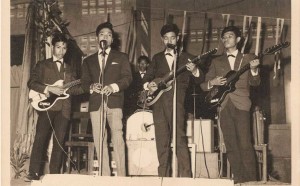 Don’t Think I’ve Forgotten: Cambodia’s Lost Rock and Roll | John Pirozzi | USA | 2014 | 105 min»
Don’t Think I’ve Forgotten: Cambodia’s Lost Rock and Roll | John Pirozzi | USA | 2014 | 105 min»
In the 1960’s and 70s, Cambodia had a thriving music scene that was influenced by Western rock and roll but combined with traditional singing and melodies. But when the rest of the area turns their attention to war, all Western cultural was sought after and destroyed. The musicians and artists of this flourishing and influential scene were eliminated and as a result traces of this unique time were almost erased and forgotten. John Pirozzi’s documentary brings them to light again.
This documentary, along with a concert, has been touring the world. Alice Cuddy of the Cambodia Daily says the film, “explores the unique fusion of sounds coming out of Cambodia in the 1960s and 1970s, and its near-disappearance.” Claire Wilcock and Gordon Conochie’s blog advises their readers to, “Please see this wonderful film if you can.” And Rupert Winchester’s coverage includes thorough context and specifics of the film and its star.
For a lot of great information on the film, the official site includes a trailer, information on the back story and filmmakers and location of showings. Also check out the Facebook page.
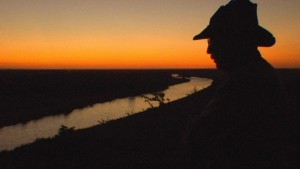 Western | Turner Ross, Bill Ross IV | USA | 2015 | 93 min»
Western | Turner Ross, Bill Ross IV | USA | 2015 | 93 min»
Western showcases two cities, Eagle Pass, Texas and Piedras Negras, Mexico which were previously indistinguishable despite the separation from the Rio Grande. But the increasing trouble brought by the Mexican drug cartel threatens the lives of those in Piedras Negras, and the mayor of Eagle Pass, Chad Foster, soon sees the the violence into his own town.
Western has been described as the third part of a trilogy, including the Ross Brothers’ previous films 45365 and Tchoupitoulas. Although Western is more politically overt than the previous films, Katie Walsh of Playlist asserts that, “the Ross brothers’ only agenda is to showcase the experience of life in a town such as this, whose neighbors to the south are more immediate and therefore more important than the policy makers in Washington.” Scott Foundas of Variety does acknowledge that the film is similar to the Ross brothers other films by, “turn[ing] on a dime from the matter-of-fact (meetings with councilmen and constituents, the daily grind of ranch work) to the lightly impressionistic (desert winds blowing down dusty, empty streets) and back again.” And overall, stylistically, the film, “is an easygoing ride in a well-worn, dusty saddle, trafficking in the traditional archetypes of the genre, while also staying true to the place itself.”
The Ross Brothers website includes links to information about all their films, including Western.
 The Iron Ministry | J. P. Sniadecki | USA, China | 2014 | 83 min»
The Iron Ministry | J. P. Sniadecki | USA, China | 2014 | 83 min»
Filmed for three years during the building of the to-be-longest railway network, this film reflects the several components of a growing country and investigates the relationship between humans and machines. With unique, almost-experimental style, the film immerses the audience into the experience of traveling by Chinese trains.
So far the film has great reviews, including from Travis Jeppesen at Artforum who concludes that it is “the best film about China in the twenty-first century that I’ve seen to date.” One component that has been acknowledged numerous times is the film’s style. Variety reviewer Jay Weissberg describes the opening as “shots of accordion-like connectors between train cars, lensed so closeup as to be abstract.” Weissberg also observes that the “sensation of movement, and the jerky swaying of the trains, is also a constant, as is the noise of the tracks — for some a lullaby, for others inescapable clatter.” Neil Young from The Hollywood Reporter adds, “Although not actually a product of the Harvard Sensory Ethnography Lab responsible for Leviathan and last year’s Locarno success Manakamana, The Iron Ministry shares the Lab’s trademark aesthetic of uninflected, unadorned, you-are-there neo-verite immediacy.”
The Iron Ministry official site has trailers and information about the screenings and filmmakers.
 Speculation Nation | Sabine Gruffat, Bill Brown | USA | 2014 | 74 min»
Speculation Nation | Sabine Gruffat, Bill Brown | USA | 2014 | 74 min»
Former UW-Madison professors and filmmakers Bill Brown and Sabine Gruffat travel to Spain to investigate the housing crisis. What they find is families fighting for housing by making communities and attempted Utopias out of abandoned condos and apartment buildings, campsites and even cave dwellings.
Check out the trailer. Though there is not much review of the film so far, after the film’s first screening in Copenhagen, JJ Bauer of UNC-Chapel Hill stated that Speculation Nation, “gives us an empathetic portrait of a people that have lost faith in the system that failed them, and whose hope for the future rests on each other and the dream of an alternative, as opposed to a renewed economic upturn.” The rest of this review can be found here.
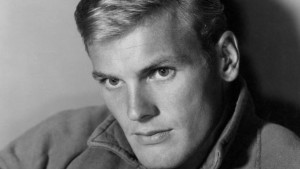 Tab Hunter Confidential | Jeffrey Schwarz | USA | 2015 | 90 min»
Tab Hunter Confidential | Jeffrey Schwarz | USA | 2015 | 90 min»
In the 1950’s Tab Hunter was a big movie star and musician (you can also see him at the 2015 Festival in Gunman’s Walk and John Waters’s Polyester). He was seen as a bachelor and linked romantically with as big of female stars as Sophia Loren. However, Tab Hunter was a secretly gay. In Tab Hunter Confidential he shows his real self and extends past his 2005 memoir, a New York Times bestseller.
The official website has information about both the movie and memoir. The trailer for the film can be found here. And there is also short video on the making of the film.
The Facebook page has information on the film and its coverage, including a review from Vanity Fair by David Friend who concludes that the film, “is not only brave for its candor and enlightening for the social context it provides, it is also a delightful eyeful, using ingeniously edited vintage clips and employing rarely seen still photos.”
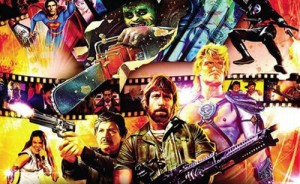 Electric Boogaloo: The Wild, Untold Story of Cannon Films | Mark Hartley | Australia | 2014 | 106 min»
Electric Boogaloo: The Wild, Untold Story of Cannon Films | Mark Hartley | Australia | 2014 | 106 min»
As previously discussed in our coverage of the ongoing Cannon series at UW Cinematheque this semester, in the 1980s one film studio presented the world with a wide range of exploitation films. Cannon studio, headed by Menahem Golan and cousin Yoram Globus, was the home of numerous Sylvester Stallone and Chuck Norris films as well as many Ninja flicks. Electric Boogaloo tells the story of this studio, through archival footage, film clips and interviews of actors, writers and directors of the time. This is the second recent documentary about Cannon—The Go-Go Boys, featured earlier this semester at the Cinematheque being the other)—but Scott Foundas of Variety argues that this one is, “Faster, sleeker and more out-of-control (in a good way)”.
David Rooney at The Hollywood Reporter acknowledges that the film highlights such aspects of Cannon’s career like, “actresses discovering that the nudity and sex requirements of a project were far more extensive than they had signed up for.”, “the business model of selling off foreign rights via trade ads, posters or insta-pitches for thinly conceived movies, many of them never to be made.” and also spending time on, “one of the best of the Cannon movies, Andrei Konchalovsky’s Runaway Train, and almost as much to Barbet Schroeder’s boozy downer Barfly.”
Mark Hartley previous work includes Not Quite Hollywood and Machete Maidens Unleashed!. Currently Electric Boogaloo has 95% on Rotten Tomatoes. And here is a trailer of the film.
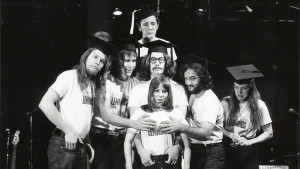 Drunk Stoned Brilliant Dead: The Story of the National Lampoon | Douglas Tirola | USA | 2015 | 93 min»
Drunk Stoned Brilliant Dead: The Story of the National Lampoon | Douglas Tirola | USA | 2015 | 93 min»
Drunk Stoned Brilliant Dead is about the influential comedy publication, and then production company, National Lampoon, a countercultural brand that was known for its edge and flicking off the world. This film covers the beginning of National Lampoon in 1970s, spawning out of Harvard, up until 2010 with the use of rare and never-before-seen footage.
Variety’s Ben Kenigsberg states that, “the broader argument of the movie is that the National Lampoon is more or less where contemporary comedy began.” The National Lampoon magazine is known for such covers as, “If You Don’t Buy This Magazine, We’ll Kill This Dog,” and the production company is known for movies such as Animal House and countless Vacation films. Drunk Stoned Brilliant Dead explains National Lampoon‘s connections with Saturday Night Live, and filmmaker John Hughes.
John Defoe of The Hollywood Reporter praises the film as, “Energetic, laugh-stuffed and very colorful (it would be a feat to make a dull film about these people),” and adds, “Douglas Tirola’s doc will be a crowd pleaser at fests.”
Check back soon for more Wisconsin Film Festival coverage at Madison Film Forum